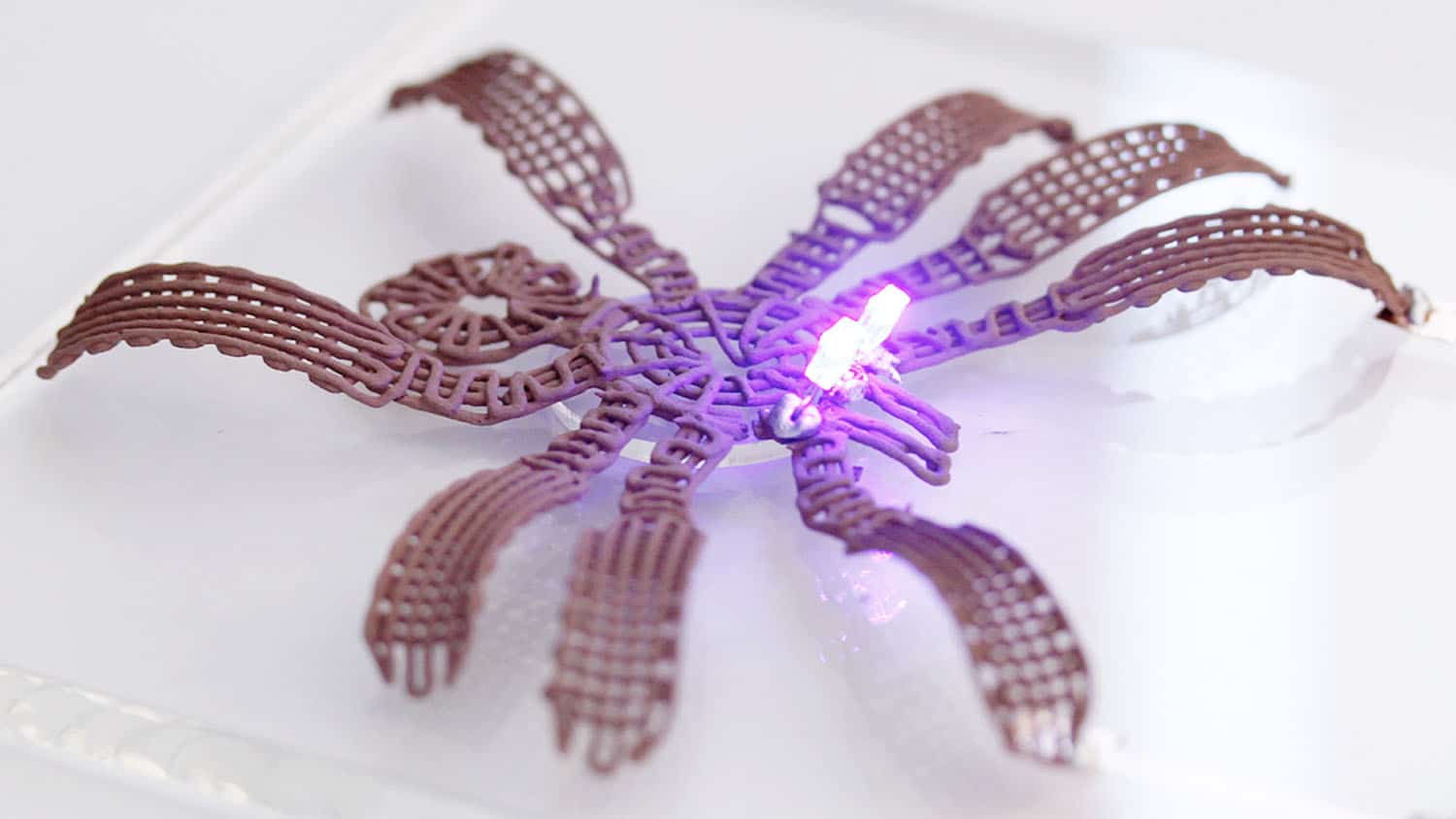NC State University researchers have developed a metallic gel that has high electrical conductivity and can be used to print three-dimensional solid objects at room temperature.
“3D printing has revolutionized manufacturing, but we’re not aware of previous technologies that allowed you to print 3D metal objects at room temperature in a single step,” says Michael Dickey, co-corresponding author of a paper on the work and the Camille & Henry Dreyfus Professor of Chemical and Biomolecular Engineering at North Carolina State University. “This opens the door to manufacturing a wide range of electronic components and devices.”
To make the gel, microscopic copper particles are suspended in a solution and mixed with a liquid indium-gallium alloy. Stirring creates a metallic gel “network.”
“This gel-like consistency is important, because it means you have a fairly uniform distribution of copper particles throughout the material,” Dickey says. “This does two things. First, it means the network of particles connect to form electrical pathways. And second, it means that the copper particles aren’t settling out of solution and clogging the printer.”
The resulting gel can be processed using a 3D printing nozzle and dried at room temperature, retaining its shape. Heating during the drying process can cause structural changes in the printed object.
“Ultimately, this sort of four-dimensional printing – the traditional three dimensions, plus time – is one more tool that can be used to create structures with the desired dimensions,” Dickey says. “But what we find most exciting about this material is its conductivity. Because the printed objects end up being as much as 97.5% metal, they are highly conductive. It’s obviously not as conductive as conventional copper wire, but it’s impossible to 3D print copper wire at room temperature. And what we’ve developed is far more conductive than anything else that can be printed. We’re pretty excited about the applications here. We’re open to working with industry partners to explore potential applications, and are always happy to talk with potential collaborators about future directions for research.”
Subscribe to our Newsletter
3DPResso is a weekly newsletter that links to the most exciting global stories from the 3D printing and additive manufacturing industry.




























